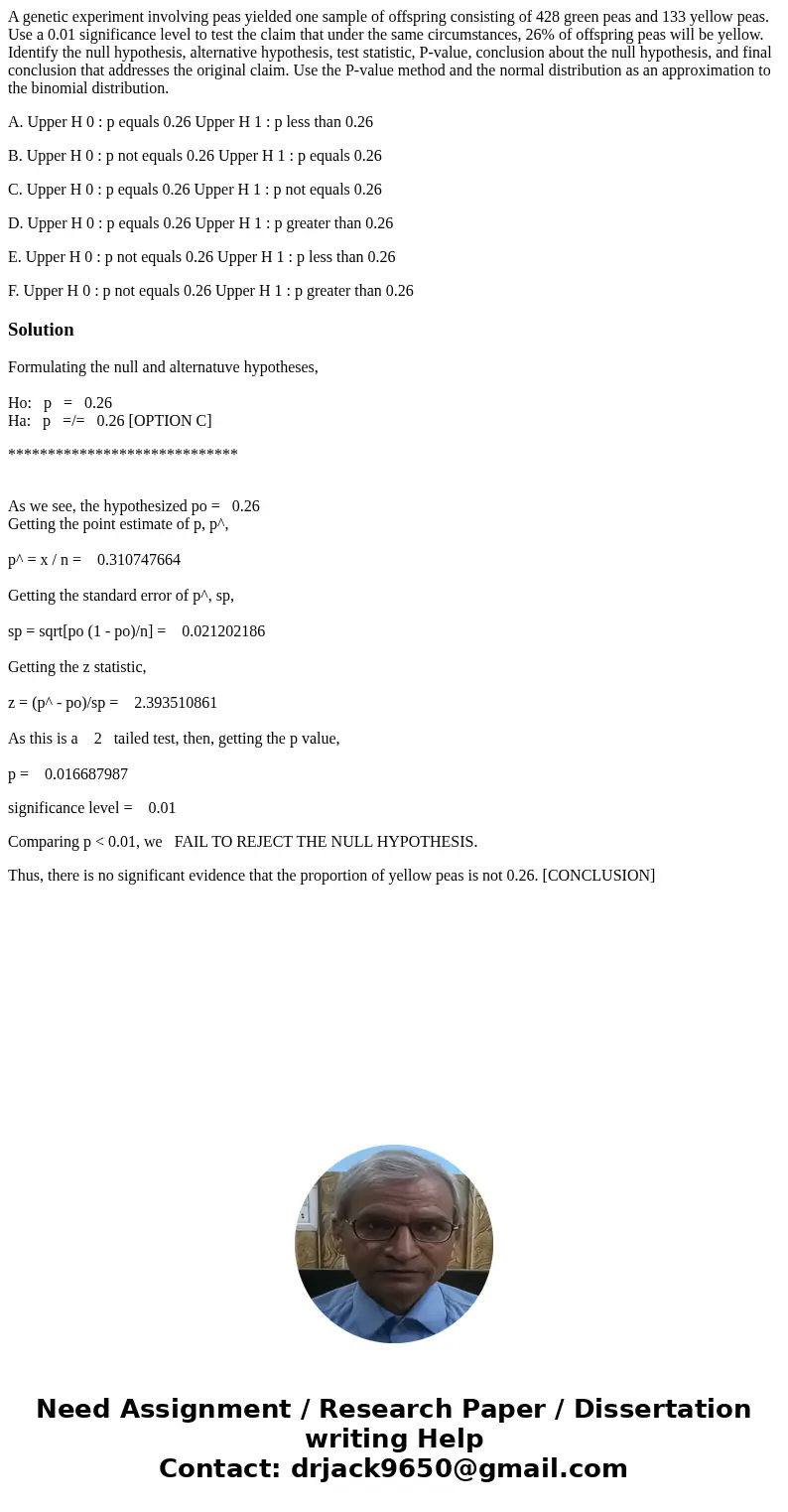A genetic experiment involving peas yielded one sample of of
A genetic experiment involving peas yielded one sample of offspring consisting of 428 green peas and 133 yellow peas. Use a 0.01 significance level to test the claim that under the same circumstances, 26% of offspring peas will be yellow. Identify the null hypothesis, alternative hypothesis, test statistic, P-value, conclusion about the null hypothesis, and final conclusion that addresses the original claim. Use the P-value method and the normal distribution as an approximation to the binomial distribution.
A. Upper H 0 : p equals 0.26 Upper H 1 : p less than 0.26
B. Upper H 0 : p not equals 0.26 Upper H 1 : p equals 0.26
C. Upper H 0 : p equals 0.26 Upper H 1 : p not equals 0.26
D. Upper H 0 : p equals 0.26 Upper H 1 : p greater than 0.26
E. Upper H 0 : p not equals 0.26 Upper H 1 : p less than 0.26
F. Upper H 0 : p not equals 0.26 Upper H 1 : p greater than 0.26
Solution
Formulating the null and alternatuve hypotheses,
Ho: p = 0.26
Ha: p =/= 0.26 [OPTION C]
*****************************
As we see, the hypothesized po = 0.26
Getting the point estimate of p, p^,
p^ = x / n = 0.310747664
Getting the standard error of p^, sp,
sp = sqrt[po (1 - po)/n] = 0.021202186
Getting the z statistic,
z = (p^ - po)/sp = 2.393510861
As this is a 2 tailed test, then, getting the p value,
p = 0.016687987
significance level = 0.01
Comparing p < 0.01, we FAIL TO REJECT THE NULL HYPOTHESIS.
Thus, there is no significant evidence that the proportion of yellow peas is not 0.26. [CONCLUSION]

 Homework Sourse
Homework Sourse